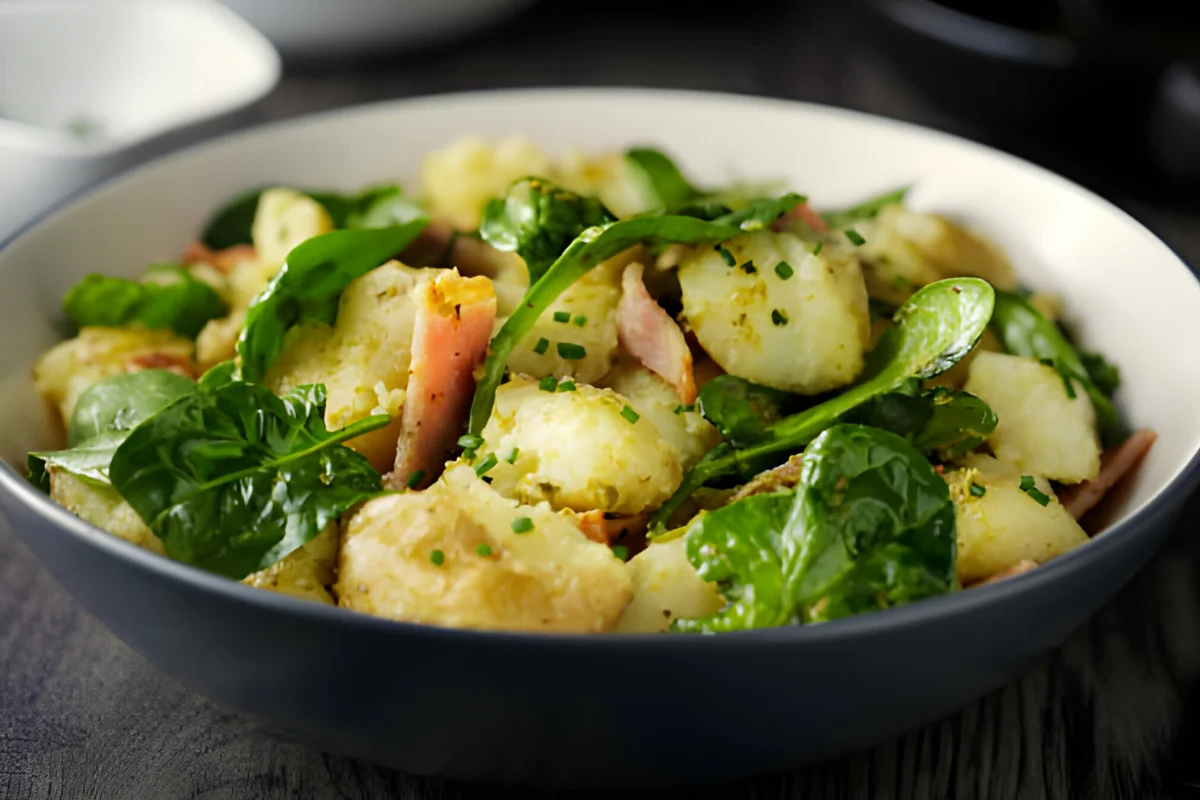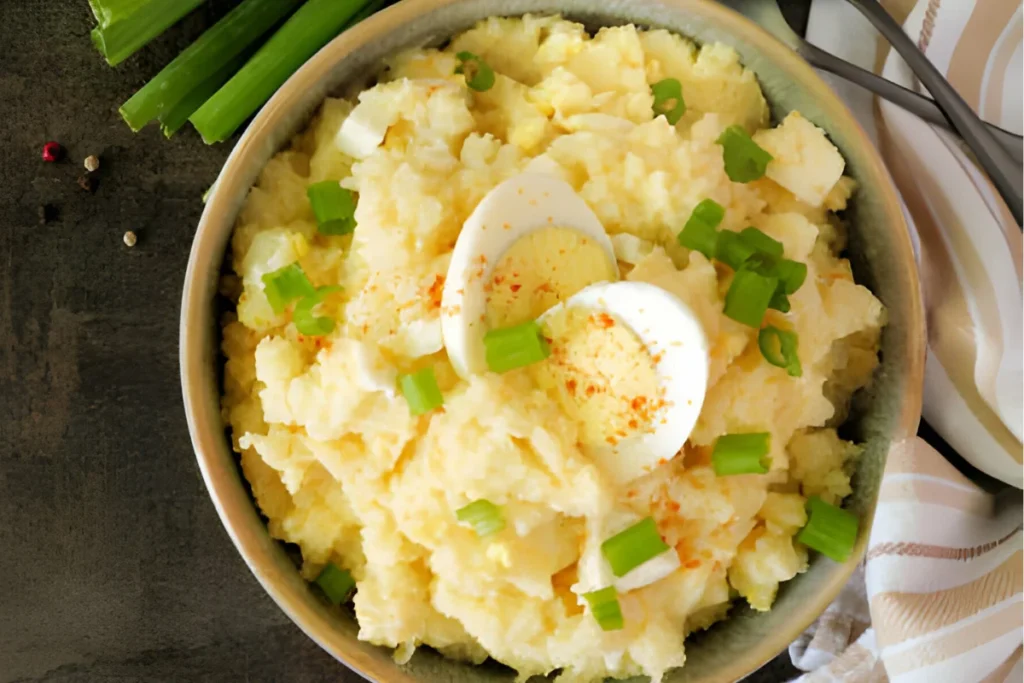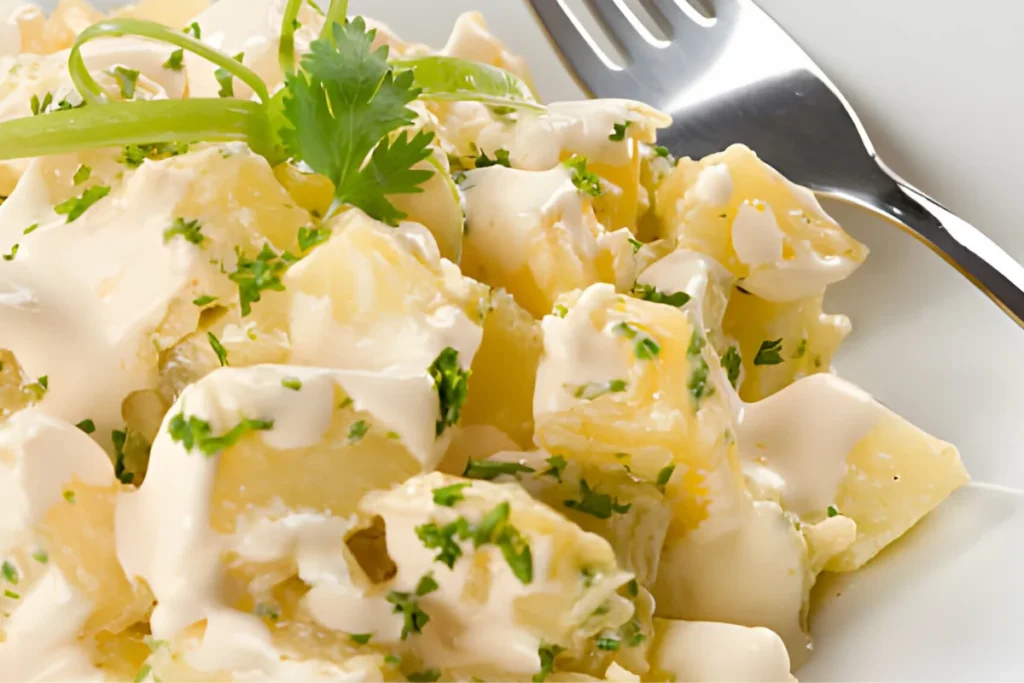Potato salad is a culinary staple with a rich history, deeply rooted in various cultures around the world. This beloved dish, often a highlight at picnics and family gatherings, has evolved into numerous variations, each reflecting unique regional flavors and traditions. Central to its appeal are the key ingredients – primarily potatoes, but also a range of dressings, vegetables, and sometimes proteins, that contribute to its diverse and adaptable nature.
- Originating in Europe, potato salad has spread globally, becoming a favorite in many countries.
- Its versatility allows for endless creativity, making it a popular choice for both home cooks and professional chefs.
In the quest for the perfect potato salad, understanding the best potatoes and ideal dressings is crucial. For insights on selecting the right potatoes, Food Network’s Guide to Potato Salad offers expert advice. Meanwhile, exploring various dressing options can significantly alter the flavor profile of the dish.
With its simple yet versatile nature, potato salad remains a timeless favorite, continually reinvented through regional influences and personal touches. For those interested in exploring more salad options, consider checking out our easy chicken salad chick broccoli salad recipe, perfect for any occasion.
Common Ingredients in Potato Salad
Potato
The foundation of any potato salad is, unsurprisingly, the potatoes themselves. Choosing the right type is crucial for texture and flavor.
- Waxy potatoes, like Red Bliss or Fingerling, hold their shape well after cooking.
- Starchy potatoes, such as Russets, offer a fluffier texture, absorbing dressings more readily.
When preparing potato salad, the cooking method is as important as the potato type. Boiling is the most common technique, ensuring the potatoes are tender but not mushy. It’s essential to start with cold water, gradually bringing it to a boil. This method ensures even cooking, preventing the outside from becoming too soft before the inside is done.
The choice of potato can dramatically influence the final dish. Waxy varieties lend a firm, bite-sized texture, ideal for salads with chunky ingredients. In contrast, starchy potatoes create a creamier, more cohesive salad, perfect for those who prefer a smoother consistency. For a hearty meal that complements potato salad, explore our hearty cowboy soup recipe, a comforting one-pot meal.
Dressing
The dressing is a pivotal component that defines the character and flavor of a potato salad. It binds the ingredients together, infusing the potatoes with a delightful taste.
- Mayonnaise-based dressings are a classic choice, offering a creamy, rich texture.
- For a lighter option, oil-and-vinegar dressings provide a tangy and refreshing alternative.
Creating the perfect dressing involves balancing flavors. A hint of acidity, typically from vinegar or lemon juice, cuts through the richness, adding a bright note. Mustard, whether Dijon or classic yellow, introduces a subtle sharpness. Herbs like dill or parsley can add freshness, while spices such as paprika or celery seed contribute depth.
The dressing’s consistency is crucial. It should be thick enough to coat the potatoes without being overly heavy. For those preferring a healthier version, yogurt or low-fat mayonnaise can replace traditional mayonnaise, maintaining creaminess while reducing calories. The key is to taste and adjust the seasoning, ensuring a harmonious blend of flavors that complements the potatoes.
Acidic Components
Acidic components play a crucial role in elevating the flavors of potato salad. They add a bright, tangy contrast to the creamy and starchy elements.
- Common choices include white wine vinegar or apple cider vinegar, each imparting its unique flavor profile.
- A splash of lemon juice can also be used, offering a fresh, citrusy zing.
These acids not only enhance taste but also help in balancing the richness of dressings like mayonnaise or oil-based vinaigrettes. They cut through the heaviness, ensuring the salad remains light and palatable. The key is to add just enough acidity to brighten the dish without overpowering the other flavors.
Crunchy Vegetables
In potato salad, crunchy vegetables are essential for adding texture and freshness, creating a delightful contrast to the soft potatoes.
- Celery is a popular choice, known for its crispness and subtle, earthy flavor.
- Onions, whether red, white, or green, provide a sharp, piquant taste that complements the creamy elements.
Other vegetables like radishes or cucumbers can be included for extra crunch and a burst of freshness. These ingredients not only enhance the salad’s texture but also contribute to its nutritional value, adding fiber and essential vitamins.
Finely chopping or dicing these vegetables ensures they integrate well with the other components, distributing their crunch and flavor throughout the salad. The inclusion of these crunchy vegetables is pivotal in creating a balanced and appealing potato salad, both in terms of taste and texture.


